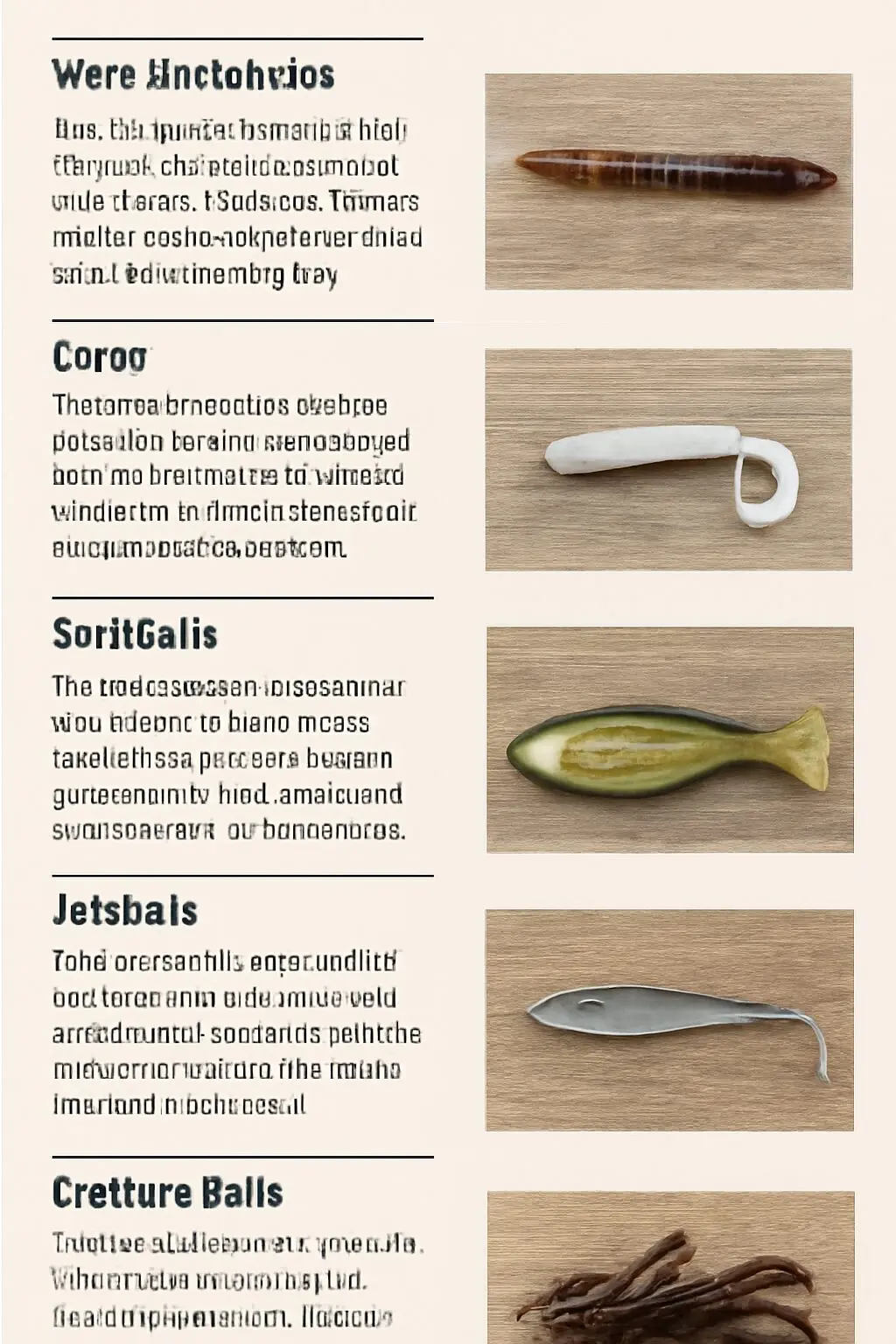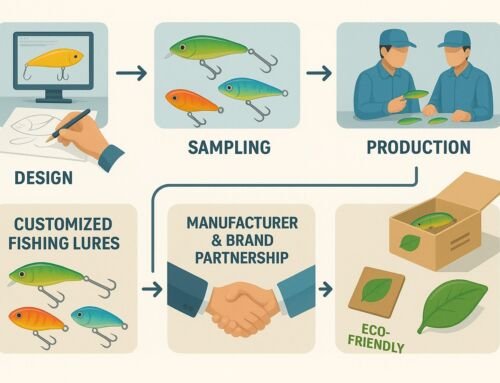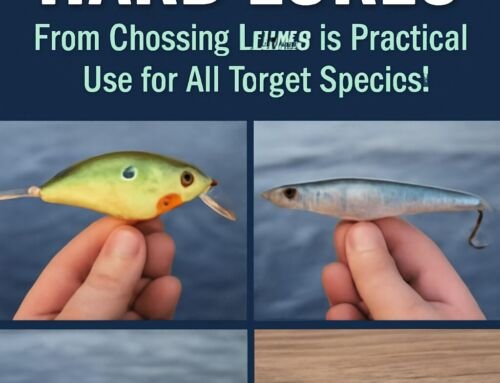Soft Baits for Beginners: An Essential Guide to Types, Techniques, and Target Species
Soft baits are a popular choice for anglers because of their lifelike action, versatility, and effectiveness in attracting fish. Whether you’re a beginner or a seasoned fisherman, understanding the different types of soft baits, their usage, and the species they target can greatly enhance your fishing experience. This guide will cover the main types of soft baits, the scenarios in which to use them, and the best methods for fishing with them.
What Are Soft Baits?
Soft baits are artificial fishing lures made from materials like rubber or plastic. They are designed to mimic the movement and texture of natural prey, offering a realistic and enticing presentation that attracts fish. The soft, flexible material allows the bait to move more naturally in the water, making it an excellent choice for various fishing techniques.
Types of Soft Baits
Worms
Description: Soft plastic worms are one of the most popular and versatile types of soft baits. They come in various sizes, colors, and designs, with a variety of actions.
Best For: Bass, trout, and panfish.
Usage: Worms can be rigged in several ways, such as Texas rig, Carolina rig, or drop shot. They are perfect for bottom fishing and can be dragged slowly along the bottom or retrieved with a quick twitch to mimic a struggling prey.
Fishing Tips: Use natural colors like brown, green, or black in clear water, and brighter colors like chartreuse in murky water.
Grubs
Description: Grubs are small, soft baits that resemble the larvae of insects. They typically have a curly tail that creates vibration in the water, mimicking the movement of a wounded creature.
Best For: Bass, perch, walleye, and panfish.
Usage: Grubs are often used for vertical jigging, particularly in deeper waters. They can be retrieved slowly or bounced along the bottom to attract fish.
Fishing Tips: Pair grubs with a jig head and use them in both shallow and deep water. When fishing in clear water, choose a more natural color, while bright colors work well in murky conditions.
Swimbaits
Description: Swimbaits are designed to look like a swimming fish, making them an excellent choice for targeting larger predatory species. They often have a more realistic shape and are made from durable soft plastic or rubber.
Best For: Large species like bass, pike, muskies, and even saltwater species.
Usage: Swimbaits are typically used with a steady retrieve to mimic the movement of a baitfish swimming. They can be used both near the surface or deeper in the water, depending on the species you’re targeting.
Fishing Tips: For clear water, opt for natural-colored swimbaits like shad or perch patterns. In murkier water, bright colors or larger swimbaits with more action can draw attention.
Jerkbaits
Description: Jerkbaits are soft baits that have a sleek, streamlined design, and they are excellent for enticing predatory fish. They are typically fished with sharp jerks and pauses, making them appear as though they’re injured.
Best For: Bass, walleye, and pike.
Usage: Cast the jerkbait out and retrieve it with short, sharp jerks of the rod, allowing the lure to dart erratically in the water. This mimics the movement of a struggling fish.
Fishing Tips: Use jerkbaits in the spring and fall when fish are actively feeding and more likely to strike at erratic movements.
Creature Baits
Description: Creature baits are designed to resemble underwater critters like crawfish, bugs, or worms. They have an irregular shape and multiple appendages that create a lot of action in the water.
Best For: Bass, especially largemouth bass.
Usage: These baits can be used in a variety of ways, including Texas rig, Carolina rig, or wacky rig. The erratic movement of the bait in the water often triggers a predatory response.
Fishing Tips: Use darker colors like black or blue when fishing in clear water, and go for bright colors like red or orange when fishing in murky water.
Paddle Tail Baits
Description: Paddle tail soft baits have a distinctive tail that wobbles or sways as it moves through the water. This movement creates a vibration that is highly attractive to predatory fish.
Best For: Bass, pike, muskies, and saltwater species.
Usage: Paddle tail baits are usually rigged on a jig head or as a trailer behind a spinnerbait. They can be used for a slow retrieve or fast to simulate an escaping prey.
Fishing Tips: Experiment with retrieve speeds to see what works best. Slow retrieves are great for calm water, while faster speeds are effective in more active fishing conditions.
Using Soft Baits Effectively
Rigging: The way you rig your soft bait can significantly affect its action. Popular rigging methods include Texas rigs, Carolina rigs, and drop-shot rigs. Experiment with different rigging styles to see what works best for the fish you are targeting.
Retrieve Speed: Vary your retrieve speed based on the type of bait and the behavior of the fish. Some fish prefer slow-moving baits, while others go for faster retrieves.
Environment: The water clarity, weather conditions, and the species you are targeting all play a role in choosing the right bait and presentation. Clear water often calls for natural colors, while murky water benefits from bright or contrasting colors to increase visibility.
Conclusion
Soft baits are an essential tool for any angler, especially beginners looking to expand their skills. By understanding the different types of soft baits and how to use them effectively, you can target a variety of fish species and increase your chances of a successful catch. Whether you’re fishing in freshwater or saltwater, for bass or pike, there’s a soft bait out there that can help you hook your next big fish.






